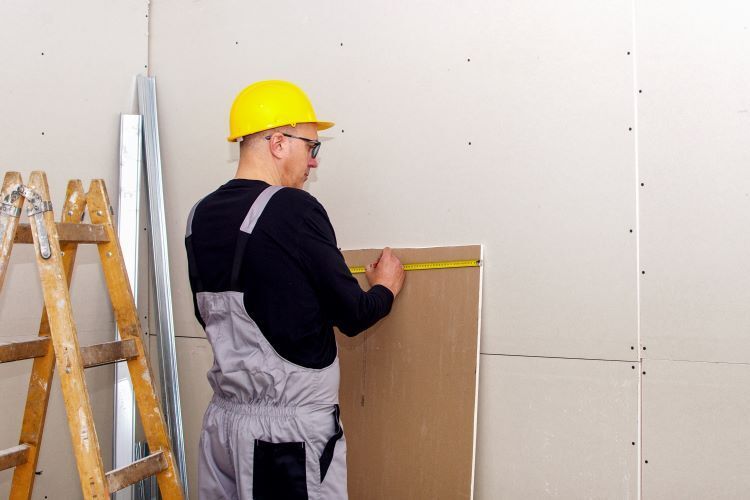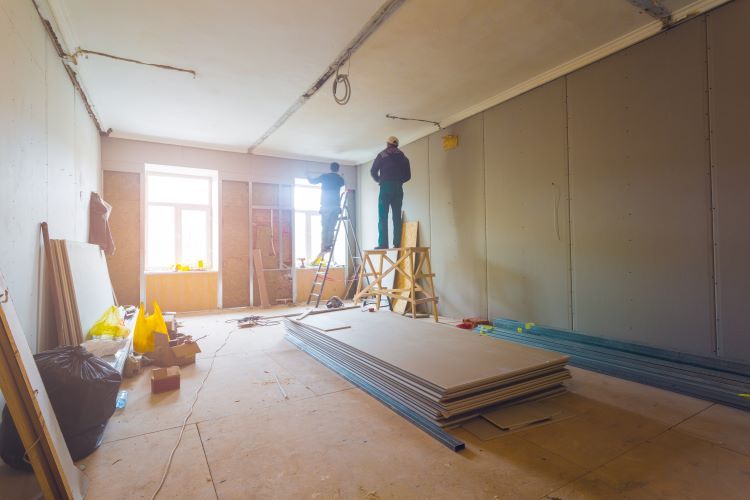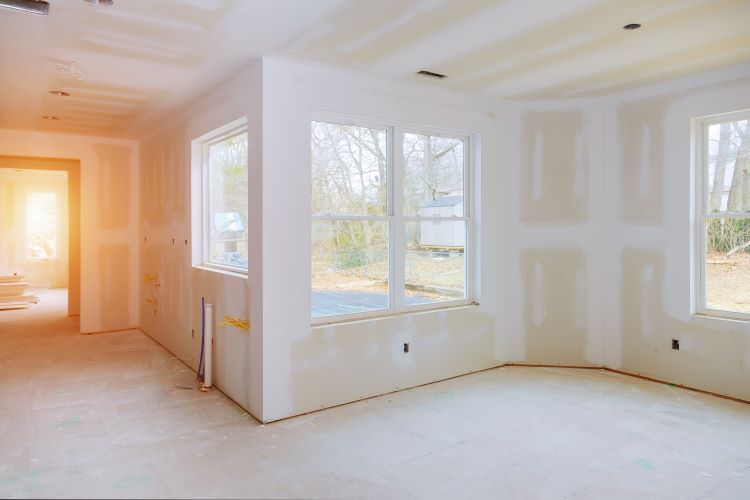Expert Solutions for Common Drywall Issues

Drywall is a staple in modern construction, known for its versatility, cost-effectiveness, and ease of installation. However, like any material, drywall can develop issues over time, from minor cosmetic blemishes to more serious structural problems. At Saskatoon Drywallers, we understand that maintaining your walls in top condition is crucial for both the aesthetic appeal and structural integrity of your home or business. In this article, we’ll explore some common drywall issues and provide expert solutions to keep your walls looking flawless.
1. Nail Pops
What Are They? Nail pops are small, circular bumps that appear on your drywall surface when nails used during installation push out from the wall.
Why They Occur: Nail pops are often caused by the natural settling of a building or fluctuations in temperature and humidity. As the wood framing behind the drywall contracts and expands, the nails can become loose and push through the drywall.
Expert Solution:
- Remove the Nail: Start by removing the loose nail with a screwdriver or pliers. Be careful not to damage the surrounding drywall.
- Secure the Drywall: Replace the nail with a drywall screw, driving it into the stud to ensure it’s securely fastened. Place an additional screw a few inches above or below the original nail to provide extra stability.
- Patch and Sand: Cover the area with joint compound, smooth it out, and let it dry. Once dried, sand the area until it’s flush with the wall, and then repaint the surface.
2. Cracks in Drywall
What Are They? Cracks in drywall can appear as fine lines or more noticeable gaps, often around windows, doors, or corners.
Why They Occur: Cracks are usually caused by the natural settling of the building, seasonal changes, or improper installation. They can also occur due to structural issues or water damage.
Expert Solution:
- Evaluate the Crack: For minor cracks, a simple repair may suffice, but larger or recurring cracks may indicate a more serious underlying issue that needs professional assessment.
- Fill the Crack: For small cracks, use a putty knife to apply joint compound or drywall patching material into the crack. Allow it to dry, then sand it smooth.
- Reinforce with Tape: For larger cracks, apply a layer of joint compound over the crack, then place drywall tape (preferably fiberglass mesh) over it. Apply additional layers of compound, allowing each layer to dry before sanding and painting.
3. Water Damage
What Is It? Water damage can manifest as stains, warping, or bubbling on drywall surfaces. This is a serious issue that can compromise the integrity of the wall and lead to mold growth.
Why It Occurs: Water damage often results from leaks in plumbing, roofs, or windows. Excess moisture in basements or high-humidity areas can also cause drywall to deteriorate.
Expert Solution:
- Identify and Fix the Source: Before addressing the drywall, identify and repair the source of the water leak. This may involve fixing a plumbing issue, sealing a window, or addressing a roof leak.
- Dry the Area: Use fans and dehumidifiers to thoroughly dry the affected area. This step is crucial to prevent mold growth.
- Replace Damaged Drywall: Severely damaged drywall should be cut out and replaced. For minor damage, the affected area can be patched with new drywall, followed by taping, mudding, and sanding to blend with the existing wall.
4. Dents and Dings
What Are They? Dents and dings are small depressions or blemishes on the drywall surface, typically caused by everyday activities like moving furniture or accidental bumps.
Why They Occur: Drywall is relatively soft and can be easily damaged by impact. Dents and dings are common in high-traffic areas or homes with children and pets.
Expert Solution:
- Fill the Dent: For small dents, use a putty knife to apply a small amount of spackle or joint compound to the dented area. Smooth it out and let it dry.
- Sand and Paint: Once the filler is dry, sand the area until it’s flush with the surrounding wall, then repaint the area to match the existing color.
5. Loose Joint Tape
What Is It? Loose or peeling drywall tape can create unsightly bubbles or cracks in the wall, often at seams or corners.
Why It Occurs: Loose tape is usually a result of improper installation, moisture exposure, or movement in the wall structure over time.
Expert Solution:
- Remove Loose Tape: Carefully cut away the loose or peeling section of tape with a utility knife.
- Apply New Tape: Apply a thin layer of joint compound over the area and place new tape (fiberglass mesh or paper) over the compound. Press it firmly into place.
- Finish with Compound: Apply additional layers of joint compound over the tape, feathering the edges to blend with the surrounding wall. Sand smooth once dry and repaint.
Conclusion
Drywall issues, while common, don’t have to be a headache if you know how to address them properly. From nail pops and cracks to water damage and loose tape, each problem has a solution that can restore your walls to their original condition.
At Saskatoon Drywallers, our team of professionals is experienced in diagnosing and fixing all types of drywall issues. Whether you need minor repairs or a complete drywall replacement, we’re here to help. Contact us today for expert advice and high-quality drywall services that will keep your walls looking pristine for years to come.
You might also like


